A question that is usually asked when buying a watch is how tight should a watch be?. Here I will discuss how you can get the perfect fit on a watch. Furthermore, I will discuss what it takes to have a watch that is adjusted to the correct measurement on your arm.
For all the years that I have been wearing watches, it took me a while to find out how to actually wear them comfortably. Adding and removing links or even micro-adjustments was just not my thing. There was a lot of trial and error involved and sadly damaged watches as well. This guide should help reduce the complications I had to go through. It should also make your job easier when you buy your watch.
Many watches on the market come in various sizes. If you were to buy one, you will most likely need to adjust it according to what suits you. This article should give you clarity on what to look for in a watch. One thing to note is that people have different preferences. Some people like to wear a watch that is loose whereas some people like it tight.
For a watch to look good it should fit according to the size of your wrist. There is no perfect size watch that will fit everyone.
How tight should a watch be?

When wearing your watch it should not be sliding around on your arm. Your watch should fit on your wrist and should not feel tight. The watch face on a perfectly fit watch will be upright and stay in its place. You Should be able to place your index finger underneath the watch band. If you can’t then the watch is too tight and needs adjusting. If your index finger moves around your watch band then it is too loose.
Reasons for a good watch fit
If you get a watch fitted before buying it, this can save you a big headache by not having to adjust the links yourself. For some people adjusting watch links can be very frustrating. This is because it is something that they have never done before and it could risk damaging their watch.
You can reduce wear on your watch if it is fit to the correct measurement. If your watch is too tight then it will get stretched and can damage the links.
A perfectly fit watch should feel very comfortable to wear. Your wrist should be able to move freely, the bracelet should not be restricting you. There is a chance for your bracelet to snap if it is too tight on the wrist.
What Wrist Should I Wear My Watch On?
Most people wear their watch on their right hand which is their non-dominant hand. If you look at most of the watches that are on the market they have been designed to be worn on the left-hand. If you examine a right handed watch, the crown will be on the left side. The crown on a left handed watch is always on the right side.
Watch Case Size Guide
Watches come in various sizes and shapes. Some people prefer large watches and some people prefer small. Getting the wrong size watch can feel uncomfortable and may not suit your look. Some watches are very small and look like a child’s watch. Whereas some are very large and they May take up the space on your whole arm and look very weird. There are certain measurements to keep an eye out for:
- Lug-To-Lug Size: This is crucial to know because it will determine how the watch will sit on your wrist. This measurement is from the tip of one lug to the other. This will be the largest measurement on a watch compared to the other ones mentioned below. With this measurement it is possible for people with a small six and a half inch wrist to be able to wear a large watch. This is because the lug to lug is larger and curves around the wrist making it feel very comfortable to wear. If the lug to lug did not curve around the wrist, then it will not be a good fit.
- Case Diameter: This is measured from one side of the watch to the other, this does not include the crown.
- Case Depth: This is the depth of the watch. Different designs can affect this measurement. For example a domed style glass or rotating bezels. Some dress watches have slim designs which can be 11 to 10 mm thickness. This is so that it can slide easily underneath a dress cuff.
These are some of the watches that usually come in a certain size:
- Dive watches can withstand very high pressure under water. They are thicker than your general watches.
- Quartz watches are less complicated and have smaller movements hence why they’re thin.
- Chronographs Watches are more complicated than your simple time only watches. These have multiple subdials and tend to be thicker and larger than your average watch.
- Dress Watches are made thin and can slide underneath cuffs.
- Pilot watches – These watches are made larger to make it easy to read the time while flying. These can also be known as a vehicle watch and sometimes to have luminous hands to be able to be seen in the dark.
Here I have made a list of recommended sizes for different wrists. Just work out the circumference of your wrist by using some measuring tape and you will be good to go:
Wrist between 5.50”-6 inches:
Recommended lug to lug: From 34.9 to 47.6 mm
Recommended case diameter: From 27.9 to 38.1 mm
Recommended depth: Under 10mm
Wrist between 6”-6.50 inches:
Recommended lug to lug: From 38.1 to 51.6 mm
Recommended case diameter: From 30.5 to 41.3 mm
Recommended depth: Under 12mm
Wrist between 6.50”-7 inches:
Recommended lug to lug: From 41.3 to 55.6 mm
Recommended case diameter: From 33.0 to 44.5 mm
Recommended depth: Under 14mm
Wrist between 7”-7.50 inches:
Recommended lug to lug: From 44.5 to 59.5 mm
Recommended case diameter: From 35.6 to 47.6 mm
Recommended depth: Over 10mm
Wrist between 7.50”-8 inches:
Recommended lug to lug: From 47.6 to 63.5 mm
Recommended case diameter: From 38.1 to 50.8 mm
Recommended depth: Over 10mm
Signs your watch is too large

On an oversized watch, the lugs will be extended over your wrist. The watch will not sit comfortably and will be sloppy because it is oversized.
If you look from the side you will be able to see that there is a gap between your wrist and the lugs.
Signs your watch is too small

Your watch leaves an imprint or red mark on your wrist every time you take it off.
The lugs are 1 cm or more further from the edges on your wrist. These are all subjective as some people do like to wear small watches and prefer them over large ones.
Watch Strap Size Guide
Getting the right size strap for your watch is all about your own preference and how you would like it to fit. There should be room for your index finger to go underneath the strap for a comfortable fit. If you can get two fingers through, it will be better to adjust it as this will be too loose. Some people do prefer it loose and some people prefer it tight. This does have its own drawbacks which I have mentioned above.
How can you get the perfect fit?
Micro adjustments
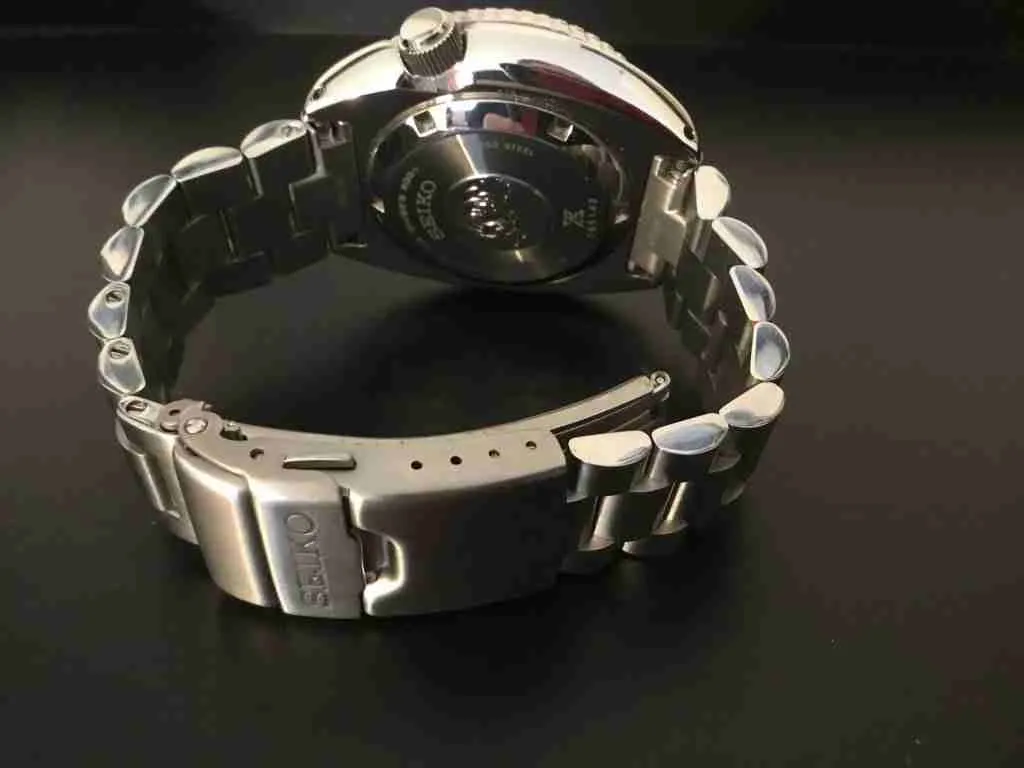
Check to see if your watch has micro adjustments on the clasp. These are tiny slots on the bracelet to make fractional adjustments. This is done by placing a pin inside the slots until you get the right adjustment for your wrist. Different watches have a certain number of adjustments. Some do not have any adjustments at all.
Add and remove links
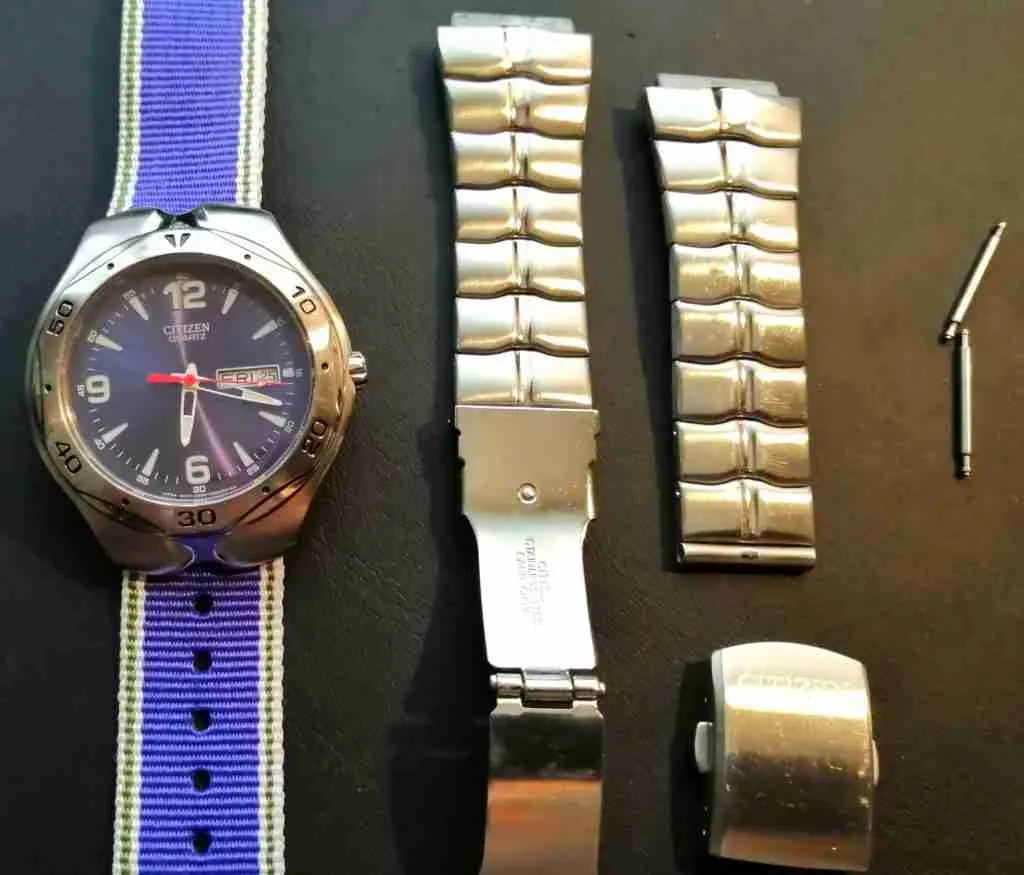
If you buy a watch In most cases you will need to adjust the links. You will need to either add links or remove them. This can be easily done yourself on most watches. If you do not feel comfortable doing this you can take it to the jewellers or a watch shop.
Change your watch strap
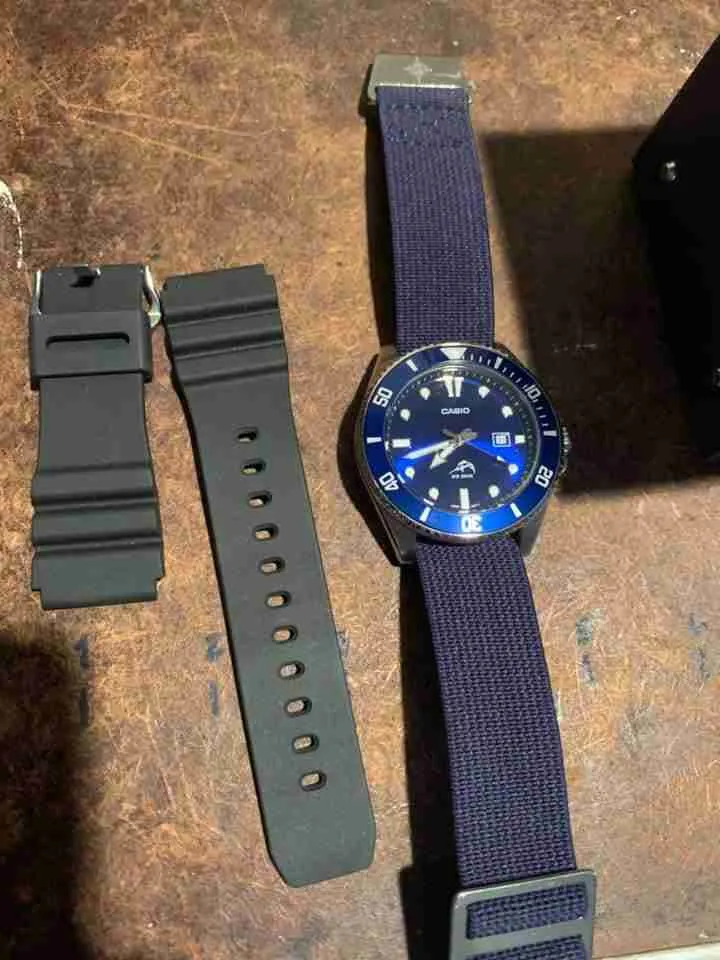
Watch straps are a lot easier to adjust than bracelets. They offer more size options and it is a lot less fiddly than changing links on a bracelet. All you have to do is take 1 pin out on either side of the lugs and put the new watch strap in. Some watch straps are made from very flexible material such as elastic which has a very snug fit. You can even buy rubber straps which are one of the most comfortable materials. These are used on very expensive animal skin straps as a lining. This is so you can keep the strap flexible and water resistant. Nylon is also used in some straps which helps to prevent moisture in warm conditions. This is due to its fast-drying characteristic.
What Is The Best Watch Strap Width For Your Wrist?
When you have a small wrist it will look better if you have a watch strap with a smaller width. Manufacturers decide the width of the strap because they manufacture the lugs.
A 20mm strap or under will go with wrists under 7 inches. whereas a 22mm or over looks better on wrists that are over 7 inches.
Some watch straps start off narrow and proceed to get wider when it connects to the lugs. Sometimes this will give the watch a small look compared to wearing a band that is wider. Metal bracelets look more beefy than watch straps. This is something you should take into consideration when buying a watch.
Will A Strap Fit My Watch Properly?
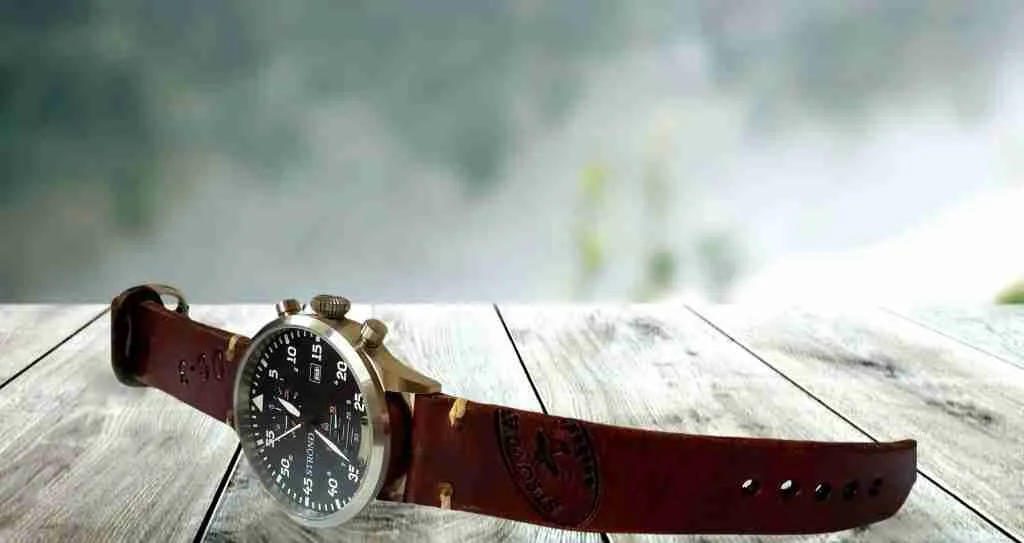
When buying a watch strap you have to consider the width of your watch lugs. This is what they are designed off. It is not possible to switch straps of different widths because your lugs are a set size. It may be possible to put a narrower watch strap on. This will likely reveal the pins on the lugs giving off a very bad presentation on your outfit.
Should I Wear My Watch Inside or Outside of the Cuff?
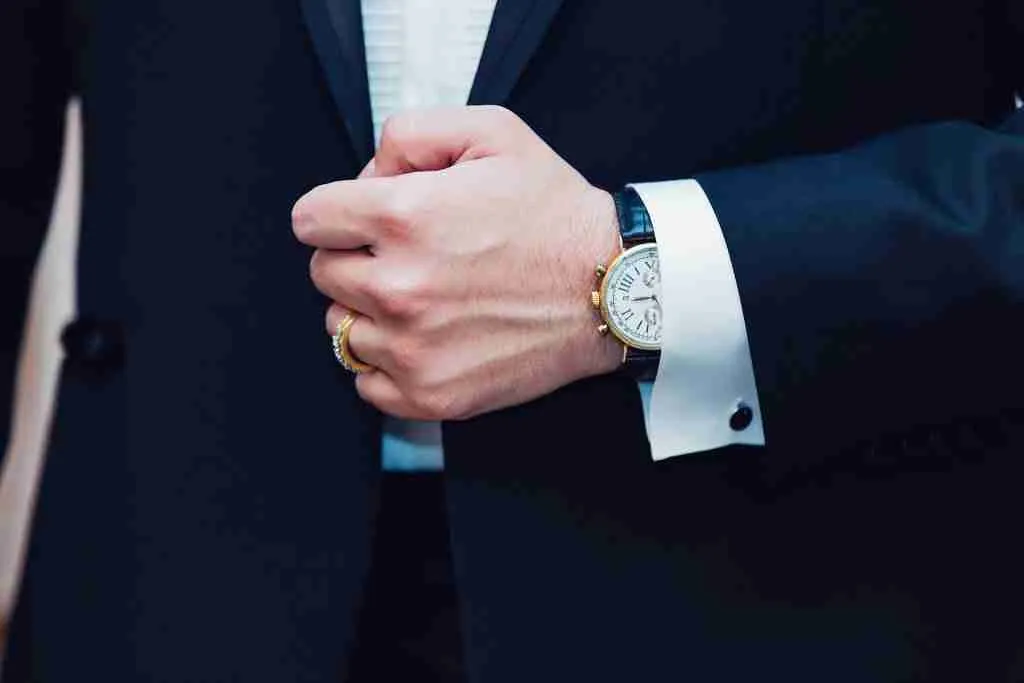
If you are standing and you have your arms by your sides then your cuffs should cover your watch. If you have your arms folded then your watch should be exposed from beneath your cuff. Last but not least, I’d say it’s forbidden to wear your watch on top of your cuff. It may cause serious harm to watch lovers.
When Should I Wear My Watch?

This all depends on the watch you own and the occasion it is. For example a black tie event which has a very strict dress code requires you to wear a dress watch or an evening watch. The watch has to match the colour of your suit and needs to be slim enough so it fits under your cuffs. It also needs to have a black leather strap. If you are going to a business formal event, it also has similar requirements which is to wear a dress watch. For a business casual event you can get away with wearing a Chronograph watch, a pilot watch, or even a field watch.
For casual wear it’s more or less up to you. You can choose to wear a chronograph watch, a pilot’s watch, a divers watch, or a sports watch or even a field watch. This is all down to you. If you are going to the gym or doing some outdoor activities then a sports watch will be ideal for this.
Watch Above or Below Wrist Bone?
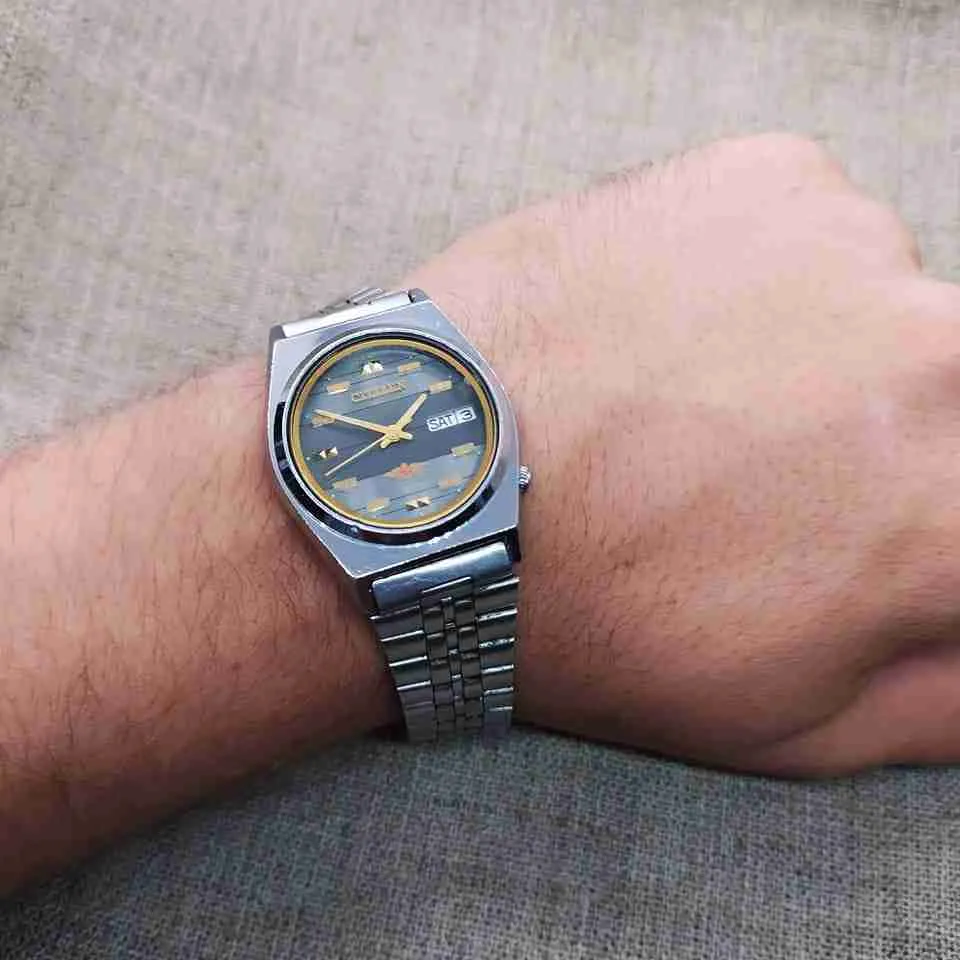
I like to wear my watch below the wrist bone because this is a lot more comfortable for me. This is the narrowest part of my arm. When my watch is adjusted correctly it never slides up and down my arm. Smaller watches are easier to wear above the wrist bone than larger watches. When wearing larger ones, they can dig into your hand when you move your hand around and that can really hurt.
See a Watchmaker

If you do not have any experience adjusting watches or you are not a handy person. Don’t put yourself through the pain of adjusting it. Some watches can be easy to do and some can be a nightmare. The last thing you want is to damage your timepiece trying to adjust it.
Arrange an appointment with your local watchmaker or jewellry shop. You can’t get a better watch than the one that is fit to your size. Another thing to note is to make sure that your replacement band matches the brand. Having a cheap band on your expensive timepiece will not make sense. Remember to get the same company band as the company of the watch. With some cheap watches this is not always the case.
Finally
As you can see from all the points mentioned above, it all comes down to your own preference. There’s no right or wrong in this. In some cases it can be about what is socially acceptable. Like I mentioned before, there are some events where there is a strict dress code which you have to adhere to. These events, you have to wear a specific watch.
Good luck in finding your perfect watch and I hope that this article helped you find it.


0 comments